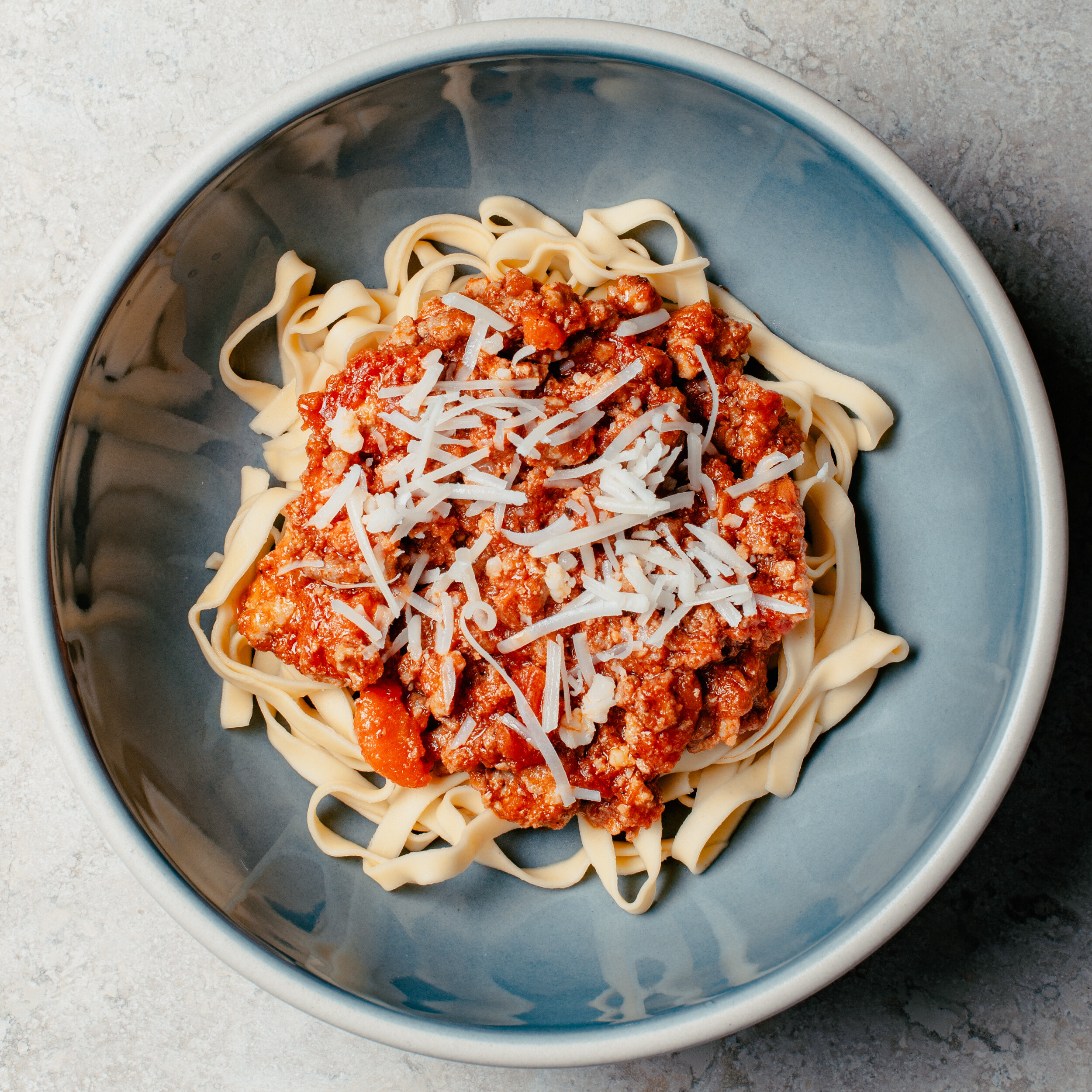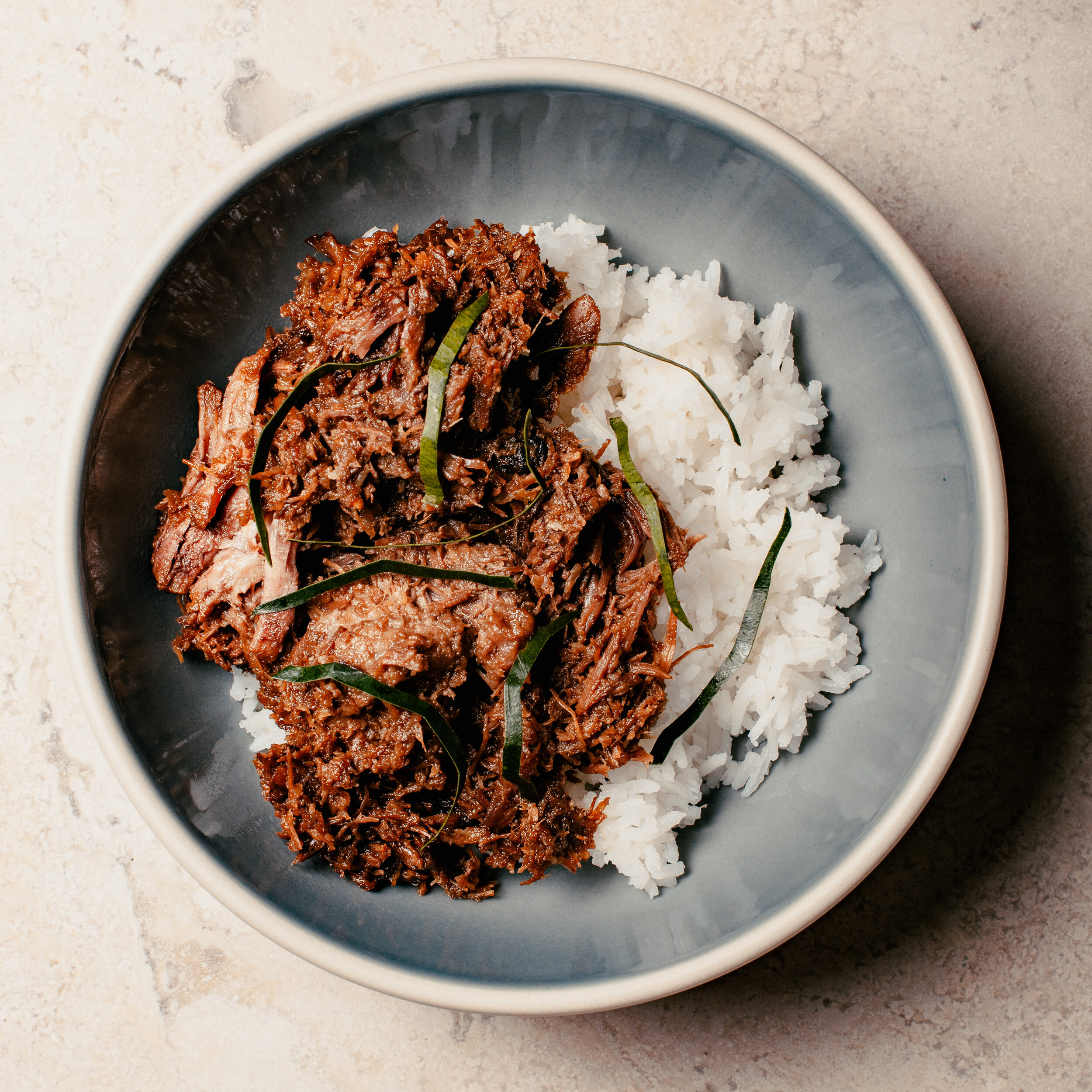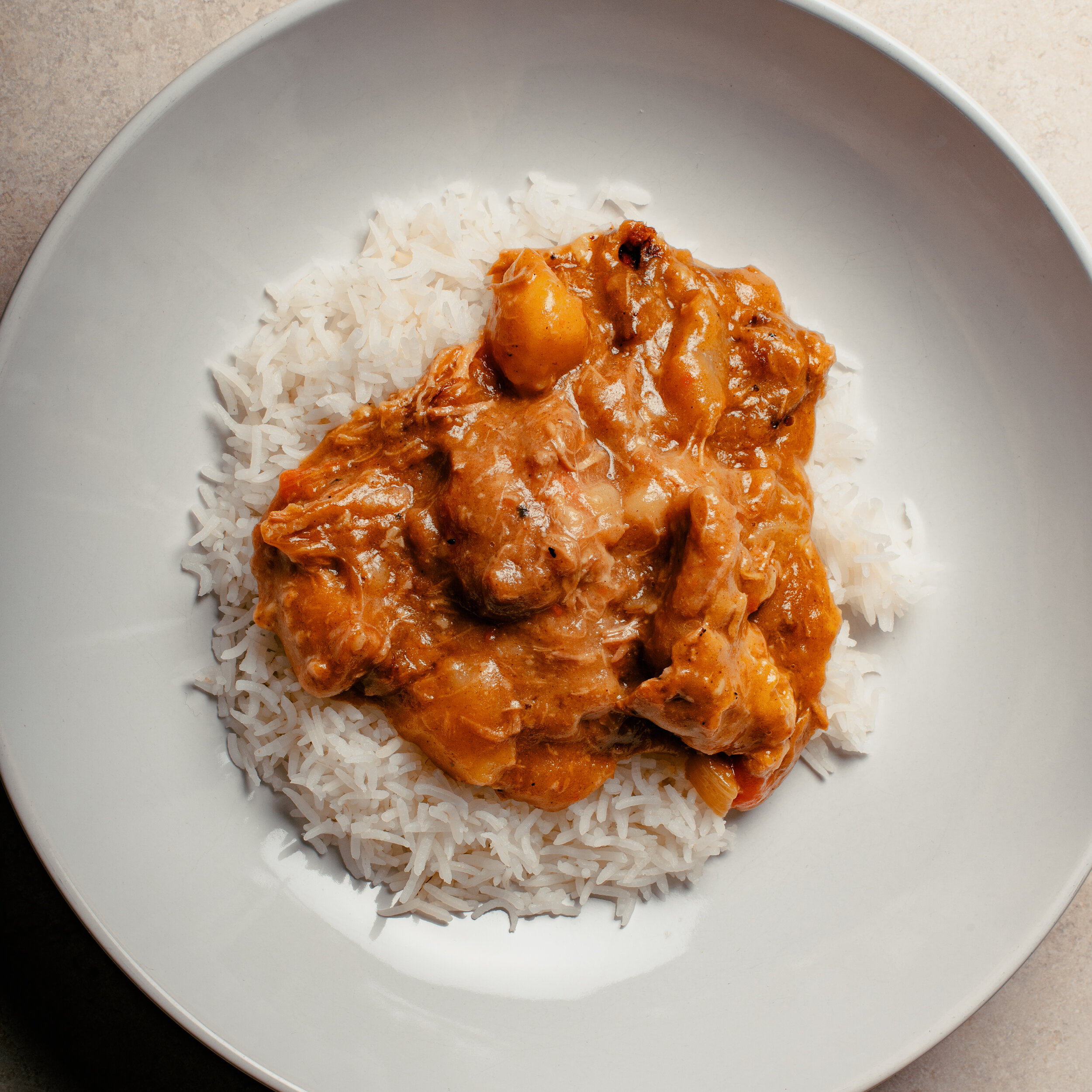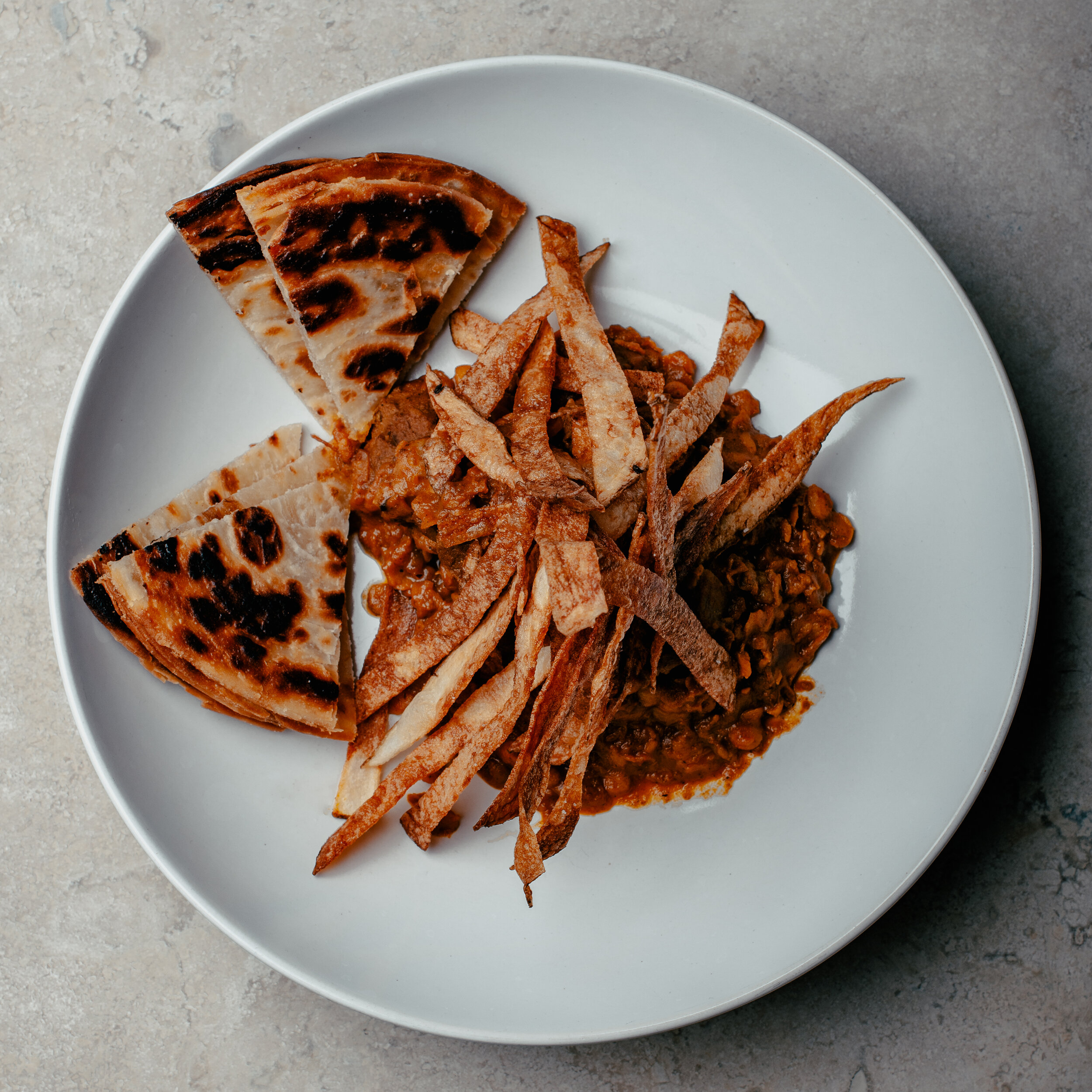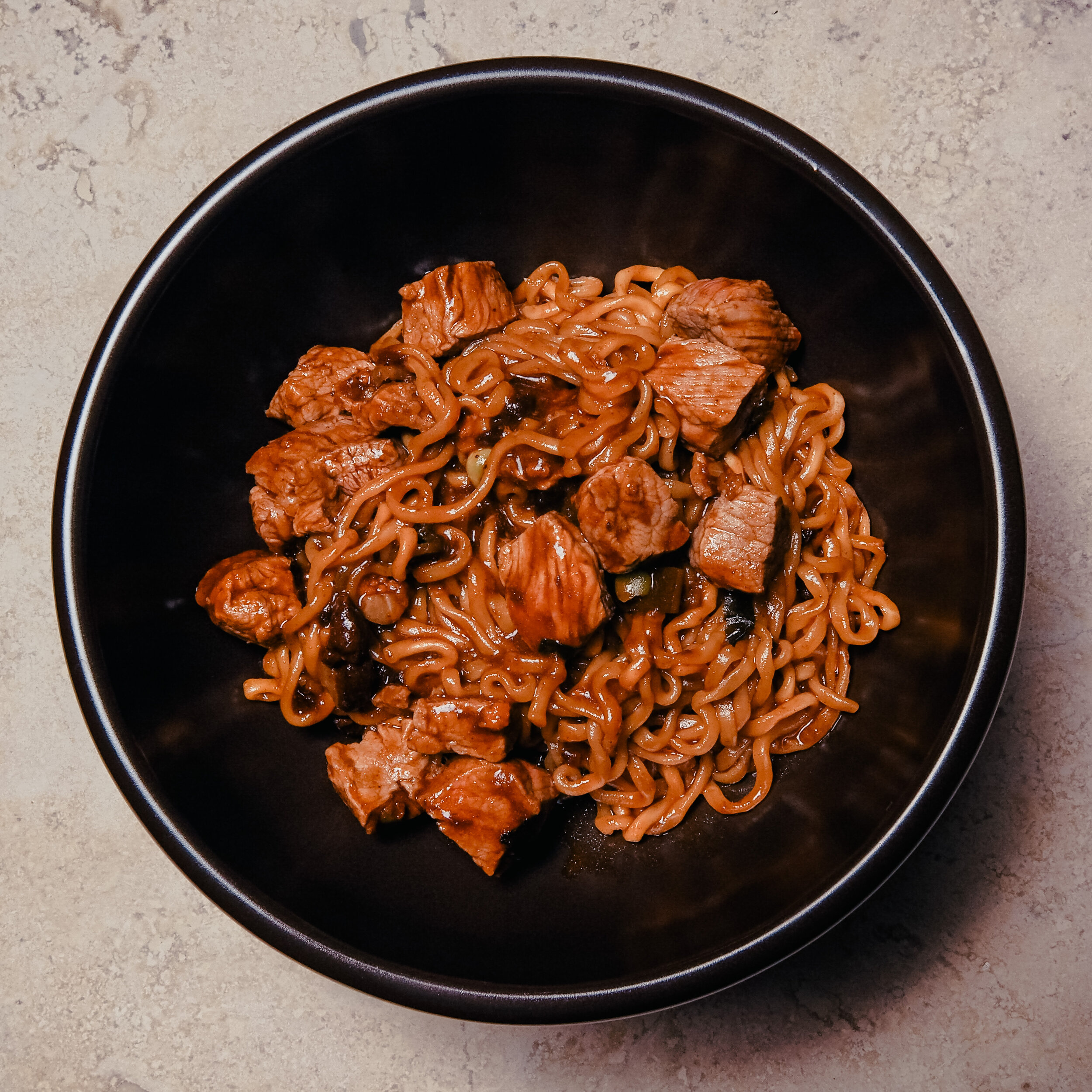At home meals: Shelter In Place version
The year 2020 has started off with me hitting the ground running with work, only to come full stop due to California’s mandate to shelter in place due to COVID-19. Home-cooked meals have become a way to deal with the imposed isolation.
The dishes, from left to right:
Bolognese: The bolognese that I make is heavy on the carrots, and void of celery. Bolognese is one of those sauces that you can make a double-batch of and freeze, and it pairs well with pasta (as shown), polenta, or potatoes.
Serves 4 for 2 Dinners
1 tablespoon vegetable oil
3 tablespoons butter
2/3 cup chopped yellow onion
1 cup chopped carrot
8 ounces ground pork
1 pound ground beef
Salt and Pepper
1 1/4 cups milk
1/4 teaspoon grated nutmeg
1 cup dry white wine
2 1/2 cups canned peeled whole Italian tomatoes, broken up with your hands, with their juice
Grated Parmesan, for serving
Put the oil, butter, and onion in a heavy 5-quart pot and turn the heat to medium-low. Cook until the onion has become translucent, then add the carrot. Cook for about 2 minutes, stirring the vegetables to coat well.
Add the ground pork and beef, a large pinch of salt, and a few grindings of pepper. Crumble the meat with a fork, stir well, and cook until the meat has lost its raw, red color and has browned lightly.
Add the milk and let it simmer gently, stirring frequently, until it has bubbled away completely, about 30 minutes. Add the tiny grating of fresh nutmeg and stir.
Add the wine and let it simmer until it has evaporated, another 20 to 30 minutes. Add the tomatoes and stir thoroughly to coat all of the ingredients well. When the tomatoes begin to simmer, turn the heat down so that the sauce cooks at the laziest of simmers, with just an intermittent bubble breaking through the surface.
Cook, uncovered, for 2 to 3 hours, stirring from time to time. While the sauce is cooking, you are likely to find that it will begin to dry out and the fat will separate from the meat. To keep it from sticking, add 1/2 cup water as necessary. Cook until the sauce is the texture and concentration you like. Taste and correct for salt. Serve with grated Parmesan on the side.
Beef Short Rib Rendang: I can’t take props for making this - it was the Aussie who made this, and it was incredible. Similar to the bolognese, rendang takes a long time to cook on the stovetop, but my god is it worth it.
INGREDIENTS
2 medium onions or 8 shallots, peeled and roughly chopped
4 cloves garlic, peeled
2-6 bird’s eye chillies, stalks removed (as you prefer)
5cm each fresh turmeric, galangal and ginger, peeled and roughly chopped
1/4 cup vegetable oil or coconut oil
2kg beef short ribs
400ml coconut cream
3 stalks lemongrass, fat stalks only, bruised
6 makrut lime (kaffir lime) leaves
1 piece cinnamon
2 star anise
1 tbsp caster sugar
2 tsp salt
1 cup dessicated coconut
Combine the onion, garlic, chilli, turmeric, galangal and ginger in a blender and blend to a puree, adding a little water if necessary to help it blend. Heat the oil in a large, heavy casserole dish over medium heat and fry the paste for 15-30 minutes (the more water you add to the paste, the longer you will need to cook it to evaporate the water before it starts to fry), stirring occasionally at the beginning and constantly as it thickens so that it doesn’t splatter or catch on the base of the pan. This paste, known as a rempah, is ready when it is browned, fragrant and thick.
Add the beef ribs and toss to coat in the rempah. Then add the coconut cream and enough water to barely cover the ribs. Add the lemongrass, 3 of the makrut lime leaves, cinnamon, star anise, sugar and salt. Bring to a simmer and cover and simmer for about 2-2.5 hours, stirring occasionally until the beef starts to become tender. Remove the lid and simmer for about 1 hour more, stirring occasionally again until the stewing liquid is reduced to a thick, very oily sauce.
Heat a dry frying pan over low-medium heat and add the coconut. Fry the coconut, stirring constantly until it is a deep golden brown and add the coconut to the rendang, stirring to combine. Cook for a further 30 minutes or so at simmering heat until deep brown, oily and thick. The rendang can be eaten straight away but will benefit from being covered and left overnight to develop. Finely shred the remaining makrut lime leaves and scatter over the rendang to serve.
Japanese Curry: This is incredibly easy, thanks to using a box of Japanese curry blocks. Hey, don’t get judgey. The recipe I use is Ivan Orkin’s, found here.
Koresh Gheymeh (Persian Stew): This amazing stew was made by the Aussie. It’s a beef and split pea stew which is a traditional Iranian stew with saffron potatoes that’s served over rice.
Ramdon: Just like everyone else, we made this after seeing this abomination on Parasite (excellent movie, btw). Though it’s delicious, it’s also so very wrong. There’s plenty of “recipes” found on the internet, but the best instruction is provided by the lovely Maangchi.
Swedish Meatball Pasta: This is one of those ultimate comfort dishes that I’ve always loved to make for several reasons: it’s very easy, only one pot is used, and the dish can be made very quickly.
Serves 4
1 pound ground beef
1/2 cup seasoned breadcrumbs
1/2 finely minced onion
1 egg
1/2 teaspoon salt (for meatballs)
1/2 teaspoon pepper (for meatballs)
2 tablespoons canola oil
2 cups beef broth
2 cups heavy cream
1/2 teaspoon salt (for sauce)
1/2 teaspoon pepper (for sauce)
1 tablespoon Worcestershire sauce
4 cups egg noodles
1 cup shredded parmesan cheese
1/2 cup chopped parsley
In a large bowl, combine the ground beef, breadcrumbs, onion, egg, salt, and pepper, mixing until evenly combined. Heat the canola oil in a pot over medium-high heat. Take about a golf-ball size of the meatball mixture and roll it into balls. Place the meatballs into the pot, cooking for one minute. Flip the meatballs.
Add the beef broth, heavy cream, salt, pepper, and Worcestershire sauce and give it a stir. Bring the liquid to a boil, then add the egg noodles. Stir constantly until the pasta is cooked and the liquid has reduced to a sauce that coats the noodles, about seven to eight minutes. Add the parmesan and the parsley, stirring until the cheese is melted. Eat up!
Photos were taken with the Nikon D3x set on manual (ISO 100, shutter speed at 200th of a sec, f-stop at f10) affixed with the 50mm lens and one strobe light.
